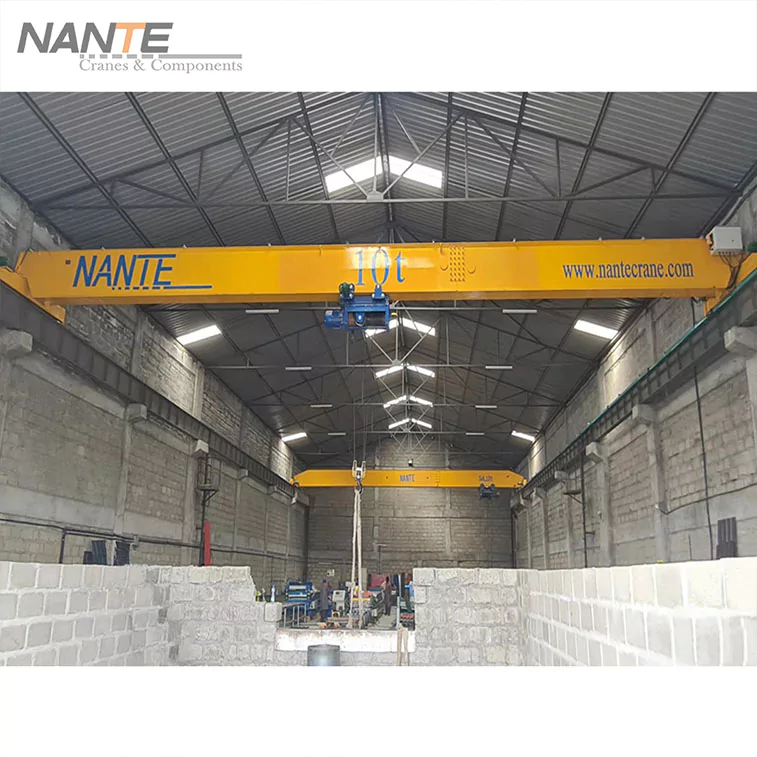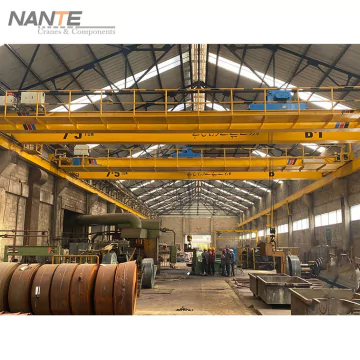Nante Crane’s Guide to the Various Types of Overhead Cranes
Date: 2024-11-12 Share:
In the world of lifting and material handling operations, overhead cranes are tools that significantly impact efficiency and cost savings in our field of expertise. It is crucial to have an understanding of the types of overhead cranes to enhance operational productivity and cost efficiency. Nante Crane is a known provider of crane equipment offering an array of solutions customized to suit various industrial requirements. For, more than three decades now Nante Crane has been focused on research and innovation in the field of producing top-notch lifting gear for sectors such as construction and aerospace, among others.
What Are Gantry Cranes?
Understanding Gantry Cranes
Gantry cranes are a type of overhead crane with a single or double girder configuration supported by freestanding legs that move on wheels or along a track. This structure allows gantry cranes to lift heavy loads efficiently without the need for building support columns. They are versatile and can be used indoors or outdoors.

Applications of Gantry Cranes
Gantry cranes are widely used in shipyards, warehouses, and manufacturing plants where heavy lifting is required. Their ability to cover large areas makes them ideal for loading and unloading bulky items such as containers and machinery. Additionally, gantry cranes can be equipped with customized hoists to suit specific operational requirements.

Evaluating the Cost of Gantry Cranes
The price of gantry cranes can differ based on elements, like their size and capacity well as any extra features such as automation systems they may have installed in them. Businesses must carefully evaluate their requirements. Seek advice from professionals like Nante Crane to find the most economical option available, to them.
How Do Jib Cranes Operate?
The Mechanics of Jib Cranes
A jib crane typically comprises an arm known as the jib that protrudes from a mast or a support mounted on a wall. The arm pivots around a location enabling it to reach points within a circular zone, for lifting tasks. This configuration proves beneficial for activities that involve recurring motions, in areas.
Practical Uses for Jib Cranes
In workshops and assembly lines, jib cranes are often utilized to aid in tasks like moving materials onto machines or shifting components, between workstations efficiently due to their size making them suitable, for cramped spaces while maintaining lifting capacity.
Assessing the Cost of Jib Cranes
When assessing the expenses associated with the jib cranes’s procurement process it’s essential to take into account elements, like load capacity limitations, rotational coverage, and installation prerequisites. Seeking guidance from suppliers such, as Nante Crane can assist companies in pinpointing jib crane varieties that match their financial boundaries.
What Makes Bridge Cranes Essential?
Anatomy of Bridge Cranes
Overhead cranes have two runways running parallel to each other connected by a moving bridge that carries the hoist for moving loads across areas in buildings or facilities offering versatility and coverage, for different industrial needs.
Utilization of Bridge Cranes in Industry
Bridge cranes play a role in sectors like car manufacturing and logistics by facilitating the movement of heavy items within work areas efficiently Their sturdy construction guarantees longevity even, in challenging environments.
Financial Implications of Bridge Cranes
When you decide to invest in bridge cranes, it’s important to factor in both the buying price and the ongoing maintenance costs, over time. Opt for options such as the ones provided by Nante Crane to not just boost efficiency but also minimize downtime thanks to top-notch components of superior quality.
Why Choose Workstation Cranes?
Workstation Crane Features and Benefits
Workstation cranes are made to improve efficiency and safety in settings that need accurate and repetitive lifting duties. These cranes are usually light and adaptable for setup. Adjustments to match evolving operational requirements. One key advantage of workstation cranes lies in their layout which lessens worker exhaustion and lowers the chances of job-related accidents. Furthermore, they offer seamless and precise load handling that enhances workflow effectiveness.
Application Scenarios for Workstation Cranes
Workstation cranes are a fit for use in manufacturing plants and maintenance spaces for moving materials between workstations efficiently. They can be tailored with lifting attachments to handle loads effectively and are valuable tools in industries like automotive production and electronics assembly for optimizing material handling processes to boost productivity.
Cost Analysis for Workstation Cranes
When you’re thinking about investing in workstation cranes, it’s important to look at both the costs and the long-term advantages. Even though the upfront spending can differ depending on the specifics of the crane and customization choices the payoff often comes from efficiency and savings on labor. Getting advice from professionals such as Nante Crane can guide you in choosing solutions that fit your operational needs perfectly.
What Are Monorail Cranes Used For?
Exploring Monorail Crane Systems
Monorail crane setups involve a rail where a hoist-mounted trolley slides to carry goods along a route efficiently and with minimal upkeep needs. Making them ideal, for handling material point, to point effortlessly.
Industry Applications for Monorail Cranes
Monorail cranes are commonly used in industries, like warehouses and automotive manufacturing to support activities such, as assembly line operations and distributing parts efficiently.
Understanding Monorail Crane Costs
When looking at monorail crane costs and features, like rail length and load capacity or control systems need to be taken into account. Even though these systems might seem like an option initially compared to types of cranes it’s crucial to think about any customization requirements that could affect the overall expenses. By working with manufacturers such, as Nante Crane companies can get customized solutions that provide both practicality and cost-effectiveness.
How Do Top & Under-Running Cranes Differ?
Characteristics of Top-Running Cranes
One distinguishing feature of running cranes is their runway system allowing the crane bridge to move along rails positioned above the working area resulting in optimal hook height and suitability, for tasks that involve lifting heavy loads across expansive distances making them a popular choice in industries, like steel mills and shipyards that demand reliable performance.
Features of Under-Running Cranes
Under-running cranes differ from top-running models in that their bridge travels along the bottom flange of a runway beam suspended from the ceiling structure. This design offers advantages in facilities with limited headroom or structural constraints. Under-running cranes are well-suited for lighter loads and applications such as machine shops or smaller manufacturing plants where space optimization is critical.
In conclusion, understanding the various types of overhead cranes available allows businesses to make informed decisions that enhance operational efficiency while meeting specific lifting requirements. By partnering with industry leaders like Nante Crane companies can access expert guidance and innovative solutions tailored to their unique needs.
 English
English






